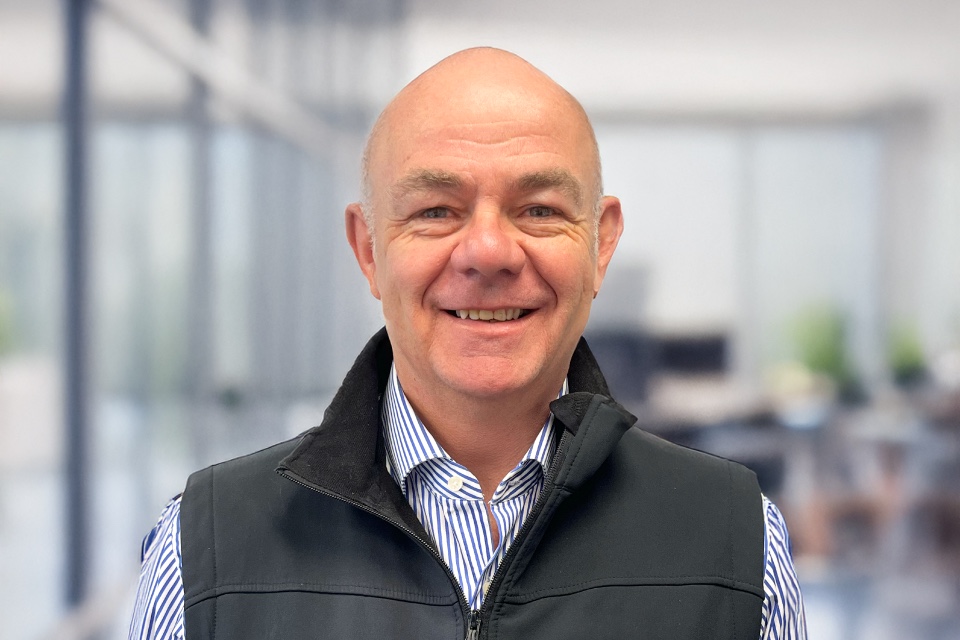For the latest instalment of our FM industry executive interview series we spoke to Rupert Lane (pictured), Global Enterprise Solutions Consultant at Infogrid, about SaaS in the sustainable built environment, the importance of workplace health & wellbeing, the power of AI when it comes to HVAC efficiencies and more…
Tell us about your company, products and services.
Infogrid is a global leader in building intelligence committed to making the built environment more efficient, sustainable and healthier through smart technologies.
Infogrid’s AI-powered SaaS platform collects, combines and analyses millions of data points from buildings through best-in-class IoT sensors, delivering real-time intelligence for the commercial real estate and property sector.
We focus on three areas – Healthy Buildings (tenant / occupier experience), Efficient Buildings (maintenance and service) and Sustainable Buildings, but the last is really a green thread that runs through all our solutions, breaking down silos across the industry.
Our philosophy is Simple, Affordable, Scalable and Sustainable. In order to have the maximum positive impact on the planet, we need to be easy and cost-effective to install across whole portfolios, not just flagship HQs.
What have been the biggest challenges the FM industry has faced over the recent months?
As we emerge from lockdown and the positive sense of urgency from COP26 (ahead of rising regulation), the industry has been tasked with all sorts of new responsibilities that have not previously been in its wheelhouse – suddenly, we need to be experts in Workplace Experience, Sustainability, remote monitoring and using technology to conduct tasks that have been done manually for decades.
It’s no longer just about keeping the lights on (literally), but delivering a full service FM on all the real estate topics of the day, amidst a labour shortage (heightened in the UK due to Brexit), water shortages, labour and energy cost inflation, thereby needing to work with technology to accelerate the change, whilst being assailed by a myriad of new technologies.
Dr Joseph Allen is often quoted as saying, ‘your building manager has a greater impact on your health and well-being than your personal doctor’, and we’re trying to provide these services at a time of economic uncertainty. Infogrid’s solution can help across the broad remit of these challenges, providing a single pane of glass on your most critical issues.
What are the biggest challenges when monitoring water quality in commercial real estate?
The majority of water safety monitoring tasks are manually intensive, with a heavy compliance reporting requirement, to ensure the safety of occupants in complex buildings. They result in huge amounts of water wastage, tonnes of CO2 emissions from heating water unnecessarily and journeys to remote sites and poor reporting of compliance through handwritten logbooks. Infogrid’s solution can remove unnecessary flushing and journeys to sites where water safety is being remotely monitored 24/7 resulting in significant cost, CO2 and time savings, while ensuring greater compliance and live alerts should any issues arrive, enabling proactive responses.
What solutions do you think can help the FMs overcome these challenges?
Infogrid’s range of IoT solutions enable FMs to perform at their best. Imagine a world where all the manual, low value add tasks were monitored remotely, without the need for time-intensive journeys or energy-consumptive manual actions, and all the reporting was available live, 24/7, without the need for reams of paper stored in folders. Imagine a world where with the time saved, you could put your team to task on the high value add activities that will actively improve our buildings’ health, reduce CO2 emissions, retain and attract talent and retain happier clients, sharing financial and green ROIs. This is the world that Infogrid enables through simple to install SaaS solutions that can be viewed from anywhere, automating processes and reports and enabling proactive facilities management.
You mentioned data and AI platform can be used as a solution. Explain what the technology is?
The end-to-end solution is designed to be simple, affordable, scalable and sustainable. This means that it can be swiftly retrofitted to any building and deliver immediate ROI through live data. Once installed, Infogrid can correlate data from different sources, through a combination of Data Science and AI, to deliver impactful recommendations or alerts that enable an intelligent understanding not just of each building, but of your entire portfolio.
For example, understanding occupancy alone is a simple data point, but looking at occupancy trends through time can enable a smart cleaning rota, staffed appropriately for peaks and troughs, with the ability to be reactive. Yet, add an understanding of the air quality and the HVAC’s energy consumption, and you can address whether or not you can reduce the HVAC’s energy costs and CO2 emissions, because you have low occupancy and good air quality…and then you can compare the performance of all the buildings in your portfolio to decide which are the least efficient or desirable to work in…and make data-led decisions about property rationalisation.
How can this technology automate and optimise parts of a FM’s role?
Firstly, the solution either removes or significantly reduces low value add laborious tasks. The reporting functions can then replace existing disconnected excel spreadsheets or hard copy log books, through live, online reports and dashboards (which can be downloaded). Alternatively, any alerts or reports can be pumped directly into a CAFM, IWMS or other end point simply through the API, enabling integration into work ticketing systems or as a standalone solution, depending on the user’s needs – it’s flexible.
Looking ahead, the solution’s recommendations are able to steer the facilities manager to making adjustments on the plant in the building which optimise the building’s performance and their time allocation to high value add activities.
What are some examples of how buildings can be made more efficient?
From my experience helping hundreds of facility managers across the UK, buildings of any age can be retrofitted with an AI smart building platform powered by IoT sensors to make them more efficient. Buildings can save hundreds of hours of flushing time and hundreds of thousands of litres of water. We had the honour to work with multiple NHS Trusts. The results our Efficient Building System has achieved for the NHS have been amazing. Per 100 sensors install, we deliver costs saving of £21,000 (£73,600 for acute wards), Labor savings of 81% of time saved (91% for remote sites), Water savings: 310,000 litre (1,085,200 for acute wards), Energy savings: 430,000 KwH (1,505,700 for acute wards), CO2 savings: 440,000 Kg (15,551,700 for acute wards).
Another example is how buildings can be cleaned more efficiently and productively. Our FM client was finding cleaning to be inefficient, wasteful of cleaning resources, and high in unnecessary labour costs. By deploying door monitoring sensors on 107 toilet cubicles across the building, staff could understand how many people were using the facilities and when. The system, for example, told them that cubicles on the top floor were used much more frequently than other floors. Our client used the Infogrid system to make their cleaning patterns more efficient. They were able to reduce cleaning times by 30% in low occupancy areas and by 20% in areas of high occupancy. This is equal to 525 hours saved per building, per year.
This technology can even be fitted to make historical buildings more efficient. The Royal Opera house uses cooling fans to manage heat from lighting equipment. This generates condensation and leaks, which poses a significant risk to the building and the precious artifacts housed within them. Managing this risk requires twice daily manual checks. We deployed Leak Detection Solution to provide always-on leak and humidity detection with alert capability to supplement the existing BMS system and visual checks, by providing detailed info on cooling and leaking. They are now saving 650 labours hours each year on leak detection.
What steps can organisations take to improve water safety and quality?
The route to improving safety is through data-led management of your water system. If you know what’s going on, anywhere on the system at any time, you can proactively head off challenges such as lesser used outlets, especially around vulnerable people in the healthcare system. This also enables you to proactive improve the performance of your critical water assets, such as calorifiers or pumps, through active maintenance, or rectify issues swiftly through reactive alerts. Trusting in 24/7 data will greatly improve your awareness of your water system and ensure greater compliance and reduced risk.
What is an FMs role in Legionella (L8) testing?
Typically, an FM will need to ensure that the sites identified in their LRA (Legionella Risk Assessment) or SoC (Scheme of Control), as designated by their Water Auditor, are passing the regulatory flushing and temperatures required of HSG274 (Part B). This requires the maintenance of a schedule of taking temperatures manually and flushing taps and water assets throughout their buildings to ensure that temperatures are maintained at the right levels and that water does not remain stagnant, where bacteria may develop. Should any temperature or water flow issues arise, it is up to them to mitigate the risk through enhanced flushing, resolving the temperature issue (e.g. fixing a calorifier) or adding chemicals. Another side effect of the role, increasingly in focus post COP26, is the need to ensure no energy or water is needlessly wasted. Thereby, understanding if a calorifier is over-active/heating and if water is being needlessly flushed is just as important now as ensuring they meet the regulatory requirements.








